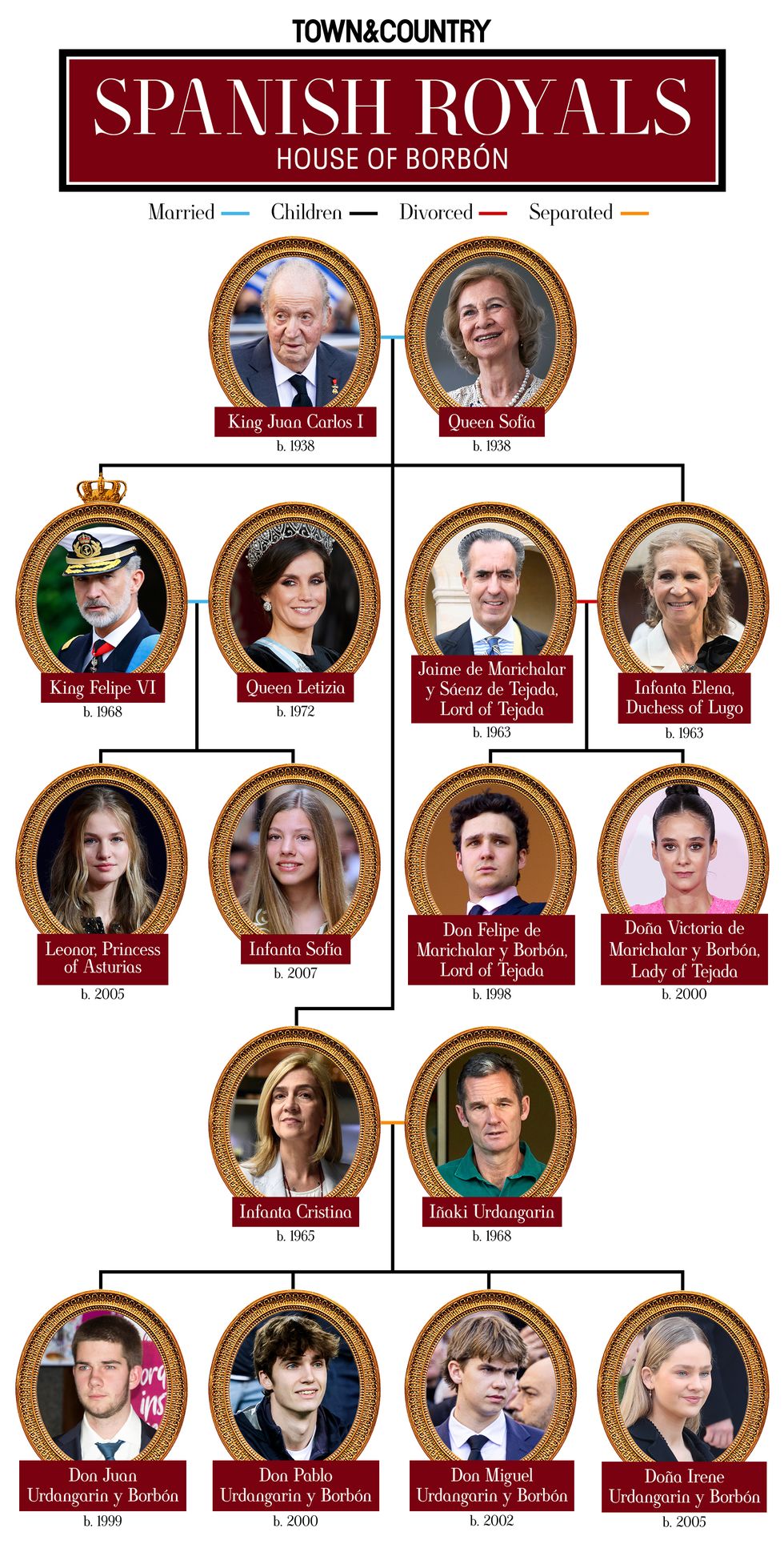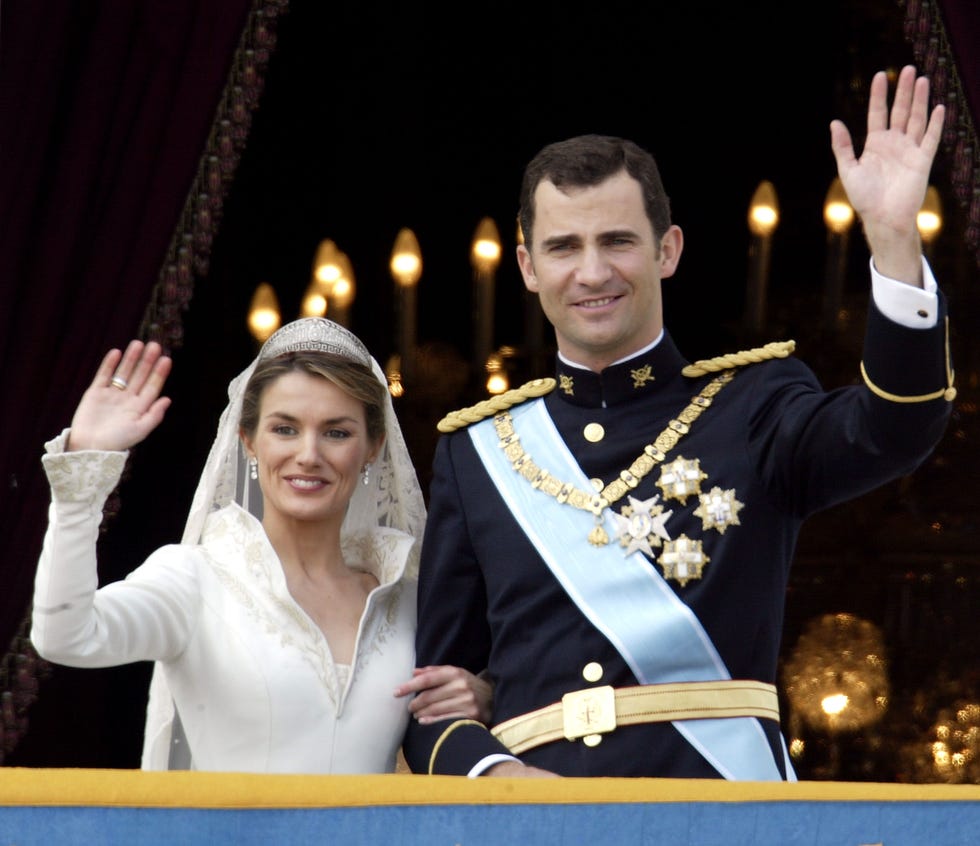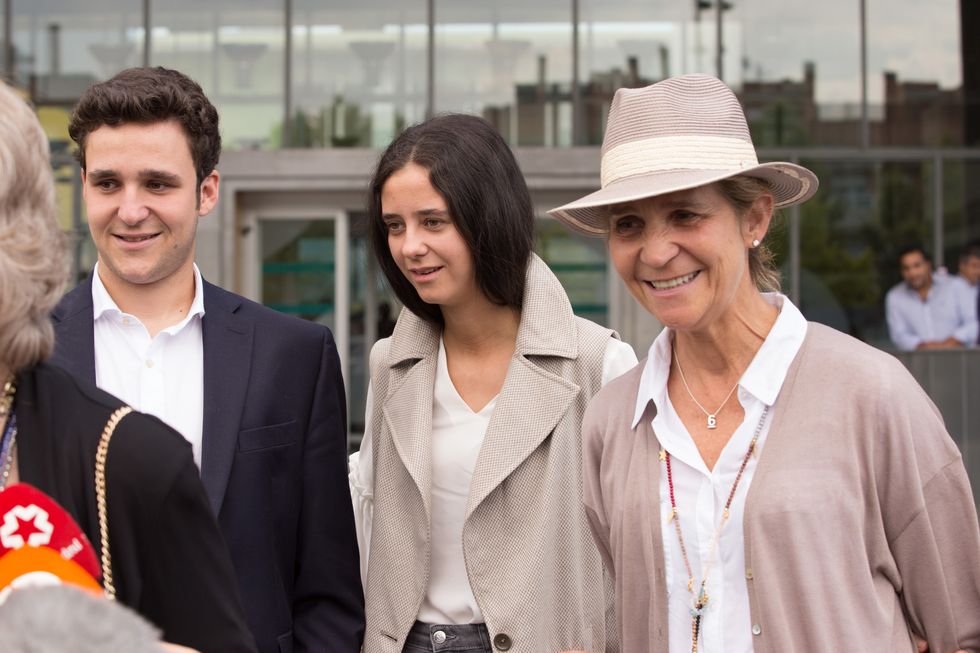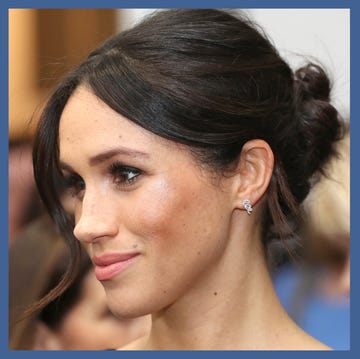The Spanish House of Borbón dates back to 1700, when King Philip V took the throne. In Spain, the House of Borbón (in English, Borbón is also spelled Bourbon) has been overthrown three times in history—in 1808, 1868, and 1931. But with King Juan Carlos I's accession to the throne in 1975, the House of Borbón has been restored in Spain, and is the current ruling monarchy.
"It is hard to exaggerate the impact Juan Carlos had on Spain—and the world—over two generations. Born in exile during the Spanish Civil War, he oversaw Spain’s transformation from a fascist dictatorship into a democracy. He thwarted a cabal of right-wing putschists determined to drag the country back to an era of torture, repression, and isolation. He guided Spain into the 21st century, overseeing its joining NATO and the European Economic Community. And he provided a raison d’être for constitutional monarchies, acting as an honest broker between political parties and presiding over an era of stability," Joshua Hammer wrote in Town & Country's September 2022 issue. Yet, he fell from grace, dramatically, and his son became Spain's king in 2014 upon Juan Carlos's abdication.
Here, a guide to the Spanish royal family:
King Juan Carlos I (b. 1938)
Juan Carlos, the former King of Spain, was born in exile in Rome, Italy to royal parents Infante Juan and Princess María of Bourbon-Two Sicilies. Following the establishment of the Second Spanish Republic in 1931, his grandfather, King Alonso XIII, was forced into exile to Rome with the Spanish royal family. When Francisco Franco's reign came to an end with his death in 1975, Juan Carlos was proclaimed King of Spain in a new constitutional monarchy—skipping over his father, Don Juan, who was previously King Alonso XIII's designated heir.
Decades later, Juan Carlos abdicated the throne in 2014, following backlash surrounding an elephant hunting trip in Botswana; media attention around his relationship with his mistress, Corinna zu Sayn-Wittgenstein; his daughter Infanta Cristina's embezzlement scandal; and his own messy finances involving the Arab world. In 2020, he went into exile in the United Arab Emirates.
Queen Sofía (b. 1938)
Queen Sofía was born Princess Sophia of Greece and Denmark to King Paul and Queen Frederica in Tatoi Palace in Athens, Greece. Her great-great-grandmother is Queen Victoria, and her great-grandfather is Kaiser Wilhelm II.
Sofía met then-Infante Juan Carlos in 1954 on a cruise in the Greek Islands, and met again at the Duke of Kent's wedding in 1961. Less than a year later, they married in Athens at the Catholic Cathedral of Saint Dionysius. Upon her marriage, the royal converted from Greek Orthodoxy to Catholicism and changed her name from Sophia to Sofía. She and Juan Carlos have three children: Infanta Elena, Infanta Cristina, and King Felipe VI.
King Felipe VI (b. 1968)
Felipe (full name Felipe Juan Pablo Alfonso de Todos los Santos de Borbón y Grecia) is the youngest child of Juan Carlos and Sofía, but since the Spanish throne follows male-preference primogeniture, he passed his older sisters in the line of succession upon his birth. At nine years old, Prince Felipe was proclaimed Prince of Asturias, the title given to the heir to the throne. After marrying Letizia Ortiz in 2004, they welcomed two daughters, Princess Leonor and Infanta Sofía. In 2014, when his father abdicated, he became King Felipe VI.
Queen Letizia (b. 1972)
Queen Letizia was born Letizia Ortiz Rocasolano. She studied journalism at university, and then got a master's degree in audiovisual journalism. After graduating, she worked as a television broadcaster, and at the time of her engagement to Felipe, she was a nightly news anchor on Telediario 2. Before Felipe, she was married to writer Alonso Guerrero Pérez, for one year. (They married in a civil marriage in 1998 and divorced in 1999.) In 2002, she met Felipe at a dinner party, and they secretly dated before announcing their engagement in November 2003. Since her first marriage was a civil marriage, she married Felipe in the Catholic Church. They have two daughters, Leonor and Sofía.
Leonor, Princess of Asturias (b. 2005)
Leonor de Todos los Santos de Borbón y Ortiz, the eldest child of Felipe and Letizia, is currently the heir presumptive to the Spanish throne. Leonor holds the title Princess of Asturias (like her father was the Prince of Asturias), in addition to the historical titles Princess of Girona, Princess of Viana, Duchess of Montblanc, Countess of Cervera, and Lady of Balaguer—all titles given to the heir presumptive. (Per the Spanish Constitution of 1978, "The heir apparent or presumptive, from birth or event that makes him such, will have the dignity of Prince of Asturias and other titles traditionally linked to the successor of the Crown of Spain.") When Leonor ascends to the throne, she'll be Spain's first queen regnant since Isabella II in the 1800s.
She currently attends a boarding school in Wales, the United World College of the Atlantic, and has begun to make solo engagements.
Infanta Sofía (b. 2007)
Sofía (full name Sofía de Todos los Santos de Borbón y Ortiz) is Letizia and Felipe's younger daughter. She is second in line to the Spanish throne, and is named after her grandmother, Queen Sofía. Like her father and sister, she has "Todos los Santos" in her full name, which translates to "All of the Saints." Unlike her sister, she has no "Princess" title, and is instead styled as an Infanta—only the heir presumptive is a Princess.
She currently attends the Santa María de los Rosales school in Madrid.
Infanta Elena, Duchess of Lugo (b. 1963)
Juan Carlos and Sofía's eldest, Infanta Elena, is currently third in the line of succession. (Elena's full name is Elena María Isabel Dominica de Silos de Borbón y de Grecia.) Following the accession of her brother, Felipe, she is no longer an active working member of the royal family.
In 1995, she married Jaime de Marichalar y Sáenz de Tejada, Lord of Tejada. The two had met in 1987 in Paris while she was studying French literature. They separated in 2007 and divorced in 2009. As of 2009, Jaime is no longer a member of the Spanish royal family, and is no longer permitted to use the Duke of Lugo title, though he retains his Lord of Tejada title—a hereditary lordship.
She has two children with Jaime: Don Felipe Juan Froilán de Marichalar y Borbón, Lord of Tejada (b. 1998), known as Froilán, and Doña Victoria de Marichalar y Borbón, Lady of Tejada (b. 2000). Elena's children follow her in line for the Spanish throne.
Infanta Cristina (b. 1965)
Juan Carlos and Sofía's middle child, Infanta Cristina, is sixth in the line of succession, followed by her four children: Don Juan Urdangarin y Borbón (b. 1999), Don Pablo Urdangarin y Borbón (b. 2000), Don Miguel Urdangarin y Borbón (b. 2002), and Doña Irene Urdangarin y Borbón (b. 2005).
Cristina—full name Cristina Federica Victoria Antonia de la Santísima Trinidad de Borbón y de Grecia—has led an interesting life. She competed at the 1988 Summer Olympics as a sailor, studied political science at university, and received a masters in international relations at New York University. She married handball player Iñaki Urdangarin in 1997, and they became the Duchess and Duke of Palma de Mallorca.
However, in 2012, Iñaki was investigated for fraud, money laundering, and tax evasion, and Cristina was named a suspect. In 2014, Cristina, Iñaki, and numerous others were charged on tax fraud charges. They stood trial in 2016, and in 2017, she was acquitted while Iñaki was sentenced to six years and three months in prison. In 2015, her brother stripped her of her dukedom, making her no longer the Duchess of Palma de Mallorca. She retained her Infanta title, and her place in the line of succession. In 2022, Iñaki and Cristina separated.
The Spanish Line of Succession in 2023:
The 1978 Spanish constitution limited the succession to the Spanish throne to heirs of King Juan Carlos I only. Therefore, Juan Carlos's sisters, and their children, are excluded from the line of succession. However, his sisters are both styled as Infanta and as Duchesses, and their children use the last name Borbón. Here, the line to the throne:
- Leonor, Princess of Asturias
- Infanta Sofía
- Infanta Elena, Duchess of Lugo
- Don Felipe de Marichalar y Borbón, Lord of Tejada
- Doña Victoria de Marichalar y Borbón, Lady of Tejada
- Infanta Cristina
- Don Juan Urdangarin y Borbón
- Don Pablo Urdangarin y Borbón
- Don Miguel Urdangarin y Borbón
- Doña Irene Urdangarin y Borbón
Emily Burack (she/her) is the Senior News Editor for Town & Country, where she covers entertainment, culture, the royals, and a range of other subjects. Before joining T&C, she was the deputy managing editor at Hey Alma, a Jewish culture site. Follow her @emburack on Twitter and Instagram.



















